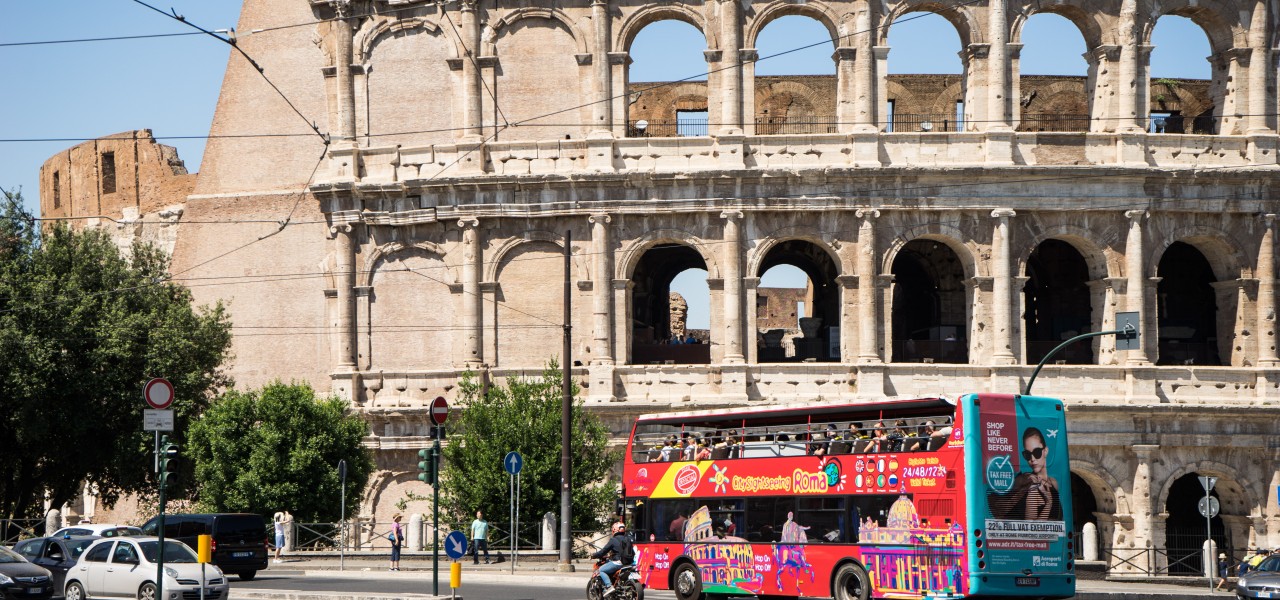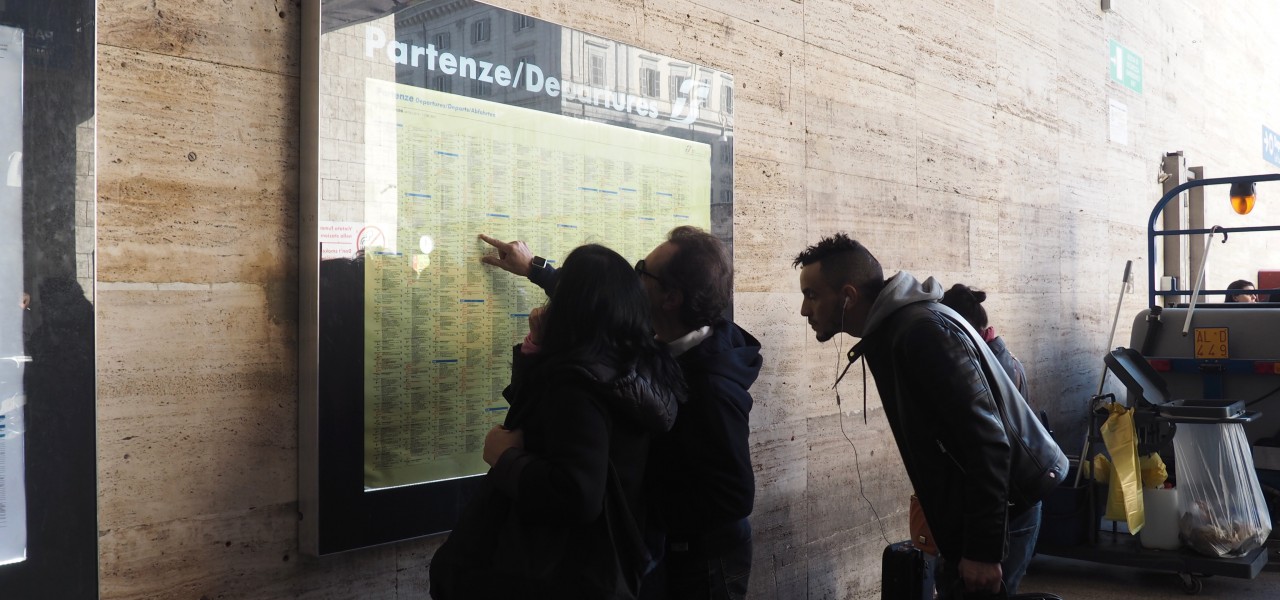Top 5 bridges Rome. This article describes the most beautiful bridges in Rome. The Tiber River has played an important role in the history of Rome. Legend has it that the founders of Rome, Romulus and Remus were put in a basket and then placed in the Tiber. At various points in Rome bridges cross the Tiber. The most beautiful bridges in Rome are only accessible for pedestrians and closed to car traffic.
A little hint: The Hop-on hop-off bus tours in Rome pass by many beautiful bridges.
Top 5 Bridges Rome: Tips and Information about the most beautiful bridges in Rome
All in all the Tiber River is 405 km long and crosses Rome from north to south. In the Middle Ages the Tiber River had been the main water resource for Rome and also the place where Romans were fishing and bathing. Going for a walk along the Tiber River should be as much a part of your Rome holiday as visiting St Peter’s Basilica or the Colosseum. Especially in the evening, when famous Rome sights along the Tiber River like the Castel Sant’Angelo, are illuminated, a walk along the river banks is very recommendable. Like this you will not only see the lit up sights, but also Rome’s beautiful bridges.
The ancient Romans are among the first important bridge builders. Many bridges date back to pre-Christian times or replace bridges from that time. In the following, I’ll tell you about the 5 most beautiful bridges in Rome along the Tiber.
TOP 5 bridges in Rome: The 5 most beautiful bridges in Rome
1. Bridges Rome: Ponte Milvio in Rome – The lovers bridge
Ponte Milvio in Rome is the oldest still existing bridge in the Italian capital. It is located in the north of Rome and you can reach it with the tram line 2 from Piazzale Flaminio. Over the bridge leads Via Flaminia, an ancient consular street dating back to the 3rd century BC, which begins at Piazza del Popolo and connects Rome with Rimini.
The first bridges in Rome were made of wood, but in 110 BC already a stone bridge was erected here. The bridge was renovated, rebuilt and extended several times throughout the centuries. Several battles took place at the bridge. In 1849, Garibaldi blew up the bridge to prevent the advancing French from invading Rome. In 1850 Pope Pius IX had the bridge renovated and which is why we can still gaze at this 2000 year old bridge today.
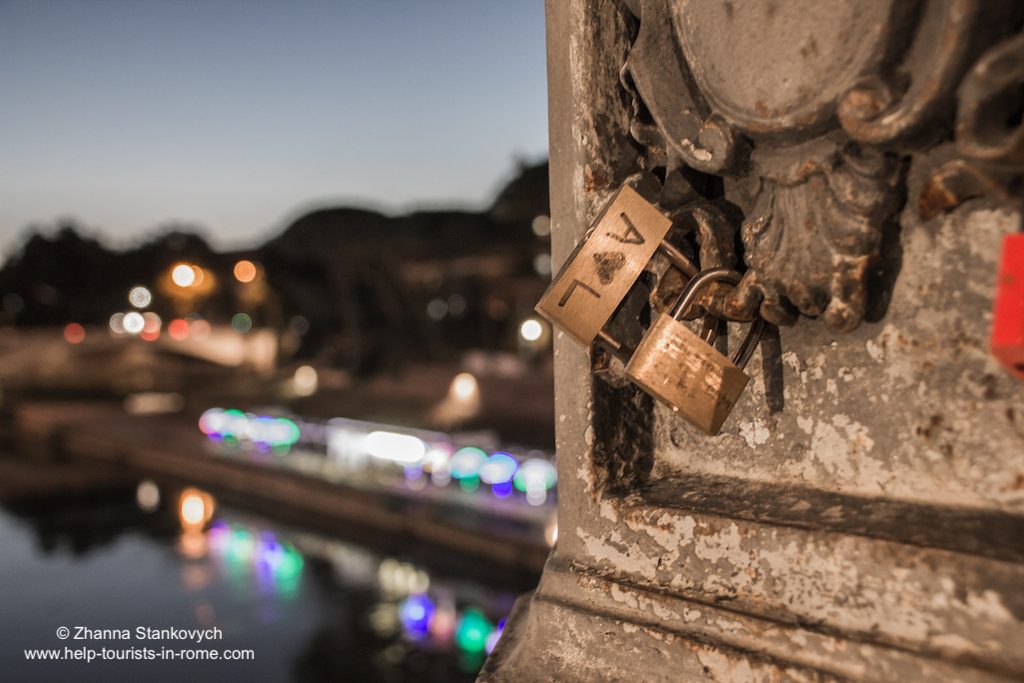
Many lovers follow the tradition to put up a lock on the bridge and through the key into the Tiber River. For security reasons, the city of Rome is not too happy about this and therefore regularly removes the locks.
You can take public transport to get to this bridge: The buses 53, 201, C3 and N25 stop at the left Tiber bank and the lines 69, 200, 226, 301, 446, 911, C2, N24, N25, as well as the tram line 2 at the station Pinturicchio, on the right Tiber bank.
2. Bridges Rome: Ponte Fabricio in Rome
The Ponte Fabricio in Rome leads from the ghetto to Tiber Island. This bridge was built in 62 BC already. The bridge is very picturesque and you can often find street artists offering their works here. You can take pretty pictures of the bridge and Tiber Island from the river banks.
Downstream under Ponte Fabricio you can see the remains of another bridge. Ponte Emilio from the 3rd century BC. This bridge is a popular photo motif, especially at sunset and in the evening. The former wooden bridge was replaced by a stone bridge in 142 BC. The bridge used to connect Rome with Via Aurelia leading to Marseille. Its location was not ideal since during times of high tide the bridge was destroyed several times. After a storm in 1598 the bridge was not restored anymore and is since called Ponte rotto, the broken bridge.

On the other side of Tiber Island Ponte Cestio leads to the district Trastevere. Some lovers also put up locks here. If you go for a walk in the evening through the ghetto in Rome, the Tiber Island and its bridges will enchant you with their wonderful atmosphere.
To get to this point at the Tiber River with several beautiful bridges take the bus 23 or 280 and get off at the station Alberteschi.
3. Bridges Rome: Ponte Sant’Angelo in Rome
Compared to the two previous bridges Ponte Sant’Angelo in Rome is rather young. Emperor Hadrian had it built in 134 AD as a direct access to his mausoleum, today’s Castel Sant’Angelo. Therefore, back in time the bridge was called Hadrian Bridge. In 1535 Pope Clement VII had statues of the two Apostles Peter and Paul built at the entrance. In 1669 the facade was rebuilt and 10 statues of angels were erected on the bridge according to the model and design of Bernini. The river walls were built in 1893 as a protection against flooding, and the ramps leading from the banks of the Tiber to the bridge were replaced by two arches crossing the banks of the Tiber. This is when the bridge got today’s look.
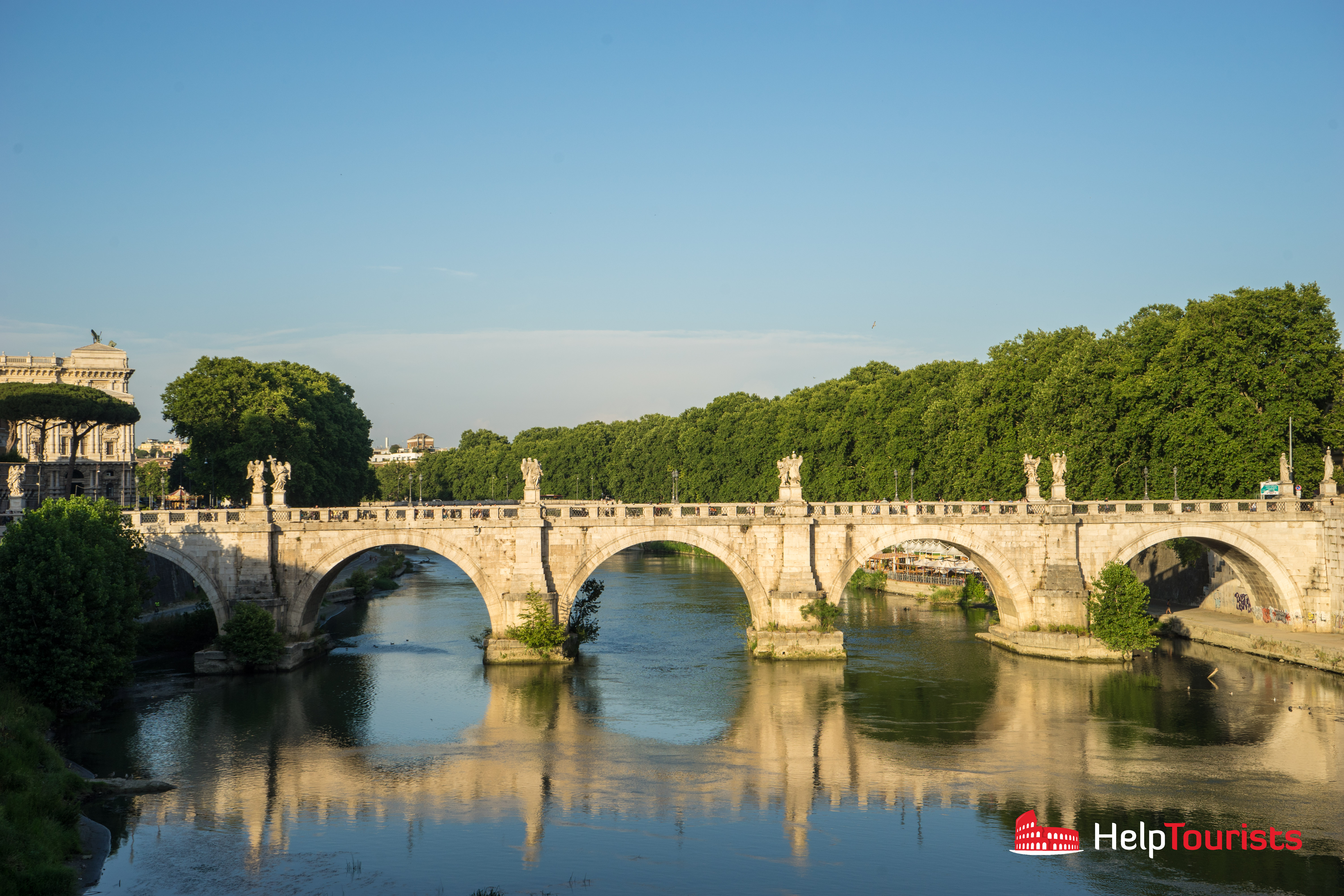
Surely, you feel the special atmosphere when crossing this impressive bridge with its beautiful statues of angels and the two saints. You can take wonderful pictures of Rome and St. Peter’s Basilica through the bridge railing. When visiting Ponte Sant’Angelo, do not miss to visit the Castel Sant’Angelo as well!
But be careful: You will very often find street vendors selling illegal goods on Ponte Sant’Angelo in Rome. You risk high penalties when buying counterfeit products.
All Hop-on hop-off buses stop near the Castel Sant’Angelo. Numerous buses of the public transport system also stop at the stations Ponte Vittorio Emanuele and Castel Sant’Angelo.
4. Bridges Rome: Ponte Sisto in Rome
Ponte Sisto in Rome connects the city center with Piazza Trilussa in Trastevere. The bridge had been built from 1473 until 1479 under Pope Sixtus IV. If you turn left on the city side of the bridge, you can see in a line the fountain in Piazza Trilussa and the monumental Aqua Paola fountain on Gianicolo. This is a great photo opportunity at any time of the day.
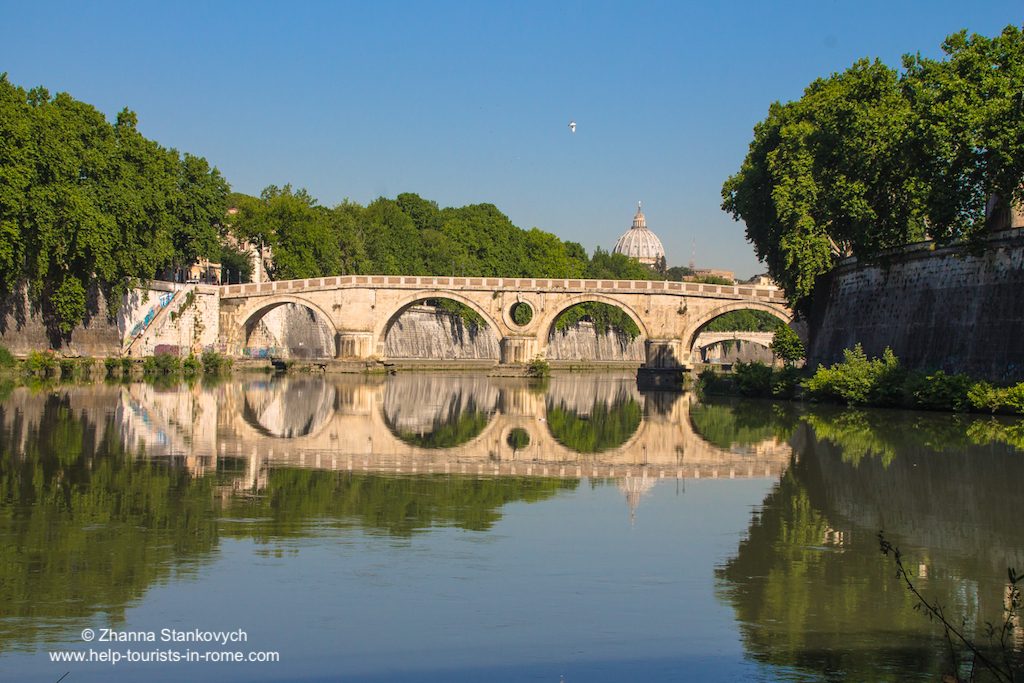
Continuing straight on through Via Pettinari after the bridge, you will arrive at Punto Gelato, one of Rome’s best ice cream parlors with special compositions. Further to the left, after the Hotel Ponte Sisto, you will find a first-class Sicilian pastry shop, I dolci di nonna Vincenza. At the end of the street, you will come to the busy Via dei Giubbonari, which leads to Campo de ‘Fiori to the left and to the right to Torre Argentina and the Ghetto in Rome.
To get to Ponte Sisto in Rome, you can take the buses 23, 280, N10 and N11.
5. Bridges Rome: Ponte della musica in Rome – The music bridge
Ponte della musica in Rome was opened in 2011. Only pedestrians, bikes and public transport are allowed to cross this bridge. This modern bridge with its wing-like arches connects the Quartier Flaminio which is home to the park of music and the MAXXI museum with the Olympic Stadium, the sports facilities and the stages. This bridge in Rome allows a comfortable pedestrian access to the facilities at events in the Olympic Stadium.
For football matches and other major events, the area around the Olympic Stadium is largely closed to traffic and you can reach the stadium best with the tram line 2 and then crossing over the Ponte della musica.








